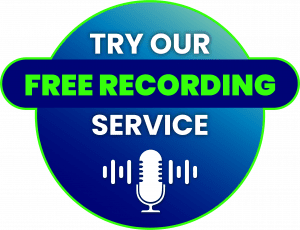Pros and Cons of Automated Transcripts
Today’s advance technology makes a multitude of humanity’s tasks, practices, and activities easier. In fact, what used to be difficult transcription work is now a piece of cake once you leave it to technology. The emergence of audio-to-text solutions are everywhere, but keep in mind that it has its limitations as well. So, you should always look out for the cons as you take advantage of the pros when using automated transcripts.
Pros of Automated Transcripts
- Speed. If you want to get your hands on transcripts ASAP, utilizing a transcription software may be your best option. This saves more time as its capable of a faster turnaround than human transcriptions. An online transcribing software can finish generating transcripts in minutes!
- Spelling. Remember auto-correct? You won’t have to search for the correct spelling anymore in times of hesitations. The software automatically and simultaneously checks spoken words against a digital dictionary as it types verbal sounds for you. It get rids of typos instantly.
- Accessible. Machine-generated transcripts are so accessible nowadays as many audio-to-text converters can be found in the internet - free to use anytime! You don’t even have to record on a separate device too. Just choose an online speech recognition or dictation software where your voice directly turns into text as you speak.
- Cost-effective. Automated transcripts are so dirt cheap that it can cost you NONE to just a couple of cents per minute. That is way less expensive than hiring a professional transcriptionist. Your staff’s productivity increases as well, as they make use of their time for more important, pressing tasks.
- Timestamps. You can find a few speech-to-text software that can automatically input timestamps in your transcript at your preferred time intervals. No need to spend time to listen back and manually input them yourself any longer.
Cons of Automated Transcripts
- Accents and Fast Talkers. It is difficult for a transcribing software to accurately provide text versions of audio when the speakers have regional accents and when they talk too fast. In these kinds of recordings, software-generated transcripts are very prone to mishears - generating words and phrases that do not make sense, providing you useless transcripts.
- Audio Challenges. Background noise is the most common type of audio difficulty. Severe ones sometimes drown the actual speakers, making it impossible for the software to produce accurate transcripts. A file is also considered to have audio challenges when the speakers are whispering, mumbling or stuttering as they speak, or when there are technical issues like interferences and feedback present in the recording. Severe audio distortion and echoes can be negative factors too. If you want to generate useful transcripts in general, you must provide a spotless digital recording.
- Limited Vocabulary. What’s also frustrating about machine-generated transcripts is that they have very limited vocabulary in terms of proper nouns and specialized terms. Speech-to-text recognition software typically have difficulty transcribing or discerning unique or local names in their right spellings - the same goes with establishments and brand names.
- Technical Difficulties. Machines are not always working. They have bad days too. If you’re fully dependent on an audio-to-text converter, technical glitches will be a big problem for you. If not treated immediately, this can even cause delays on your project deadlines.
- Customization. Obviously, a transcribing software cannot automatically produce custom transcripts. If you have a specific format and other details (i.e. inputting labels and punctuations) you want in your transcript, you’ll have to do it yourself.
“Fast” does not always mean accurate, the same way “cheap” does not always mean high quality. There are many “too good to be true” things in this world and automated transcription is still unfortunately one of them. Transcription software can still be useful in certain situations though as long as you take its shortcomings into utmost consideration. Try using a voice-to-text clean up service for proofing and finalization to ensure high-level transcript accuracy.

